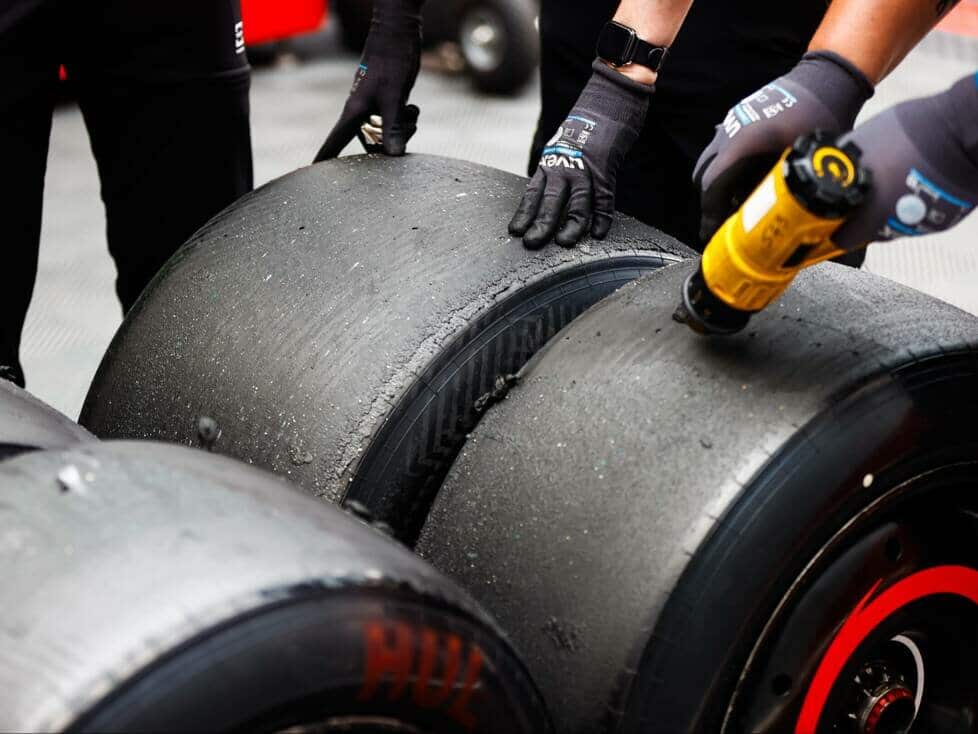With Pirelli mandating a maximum of 18 laps per set of tyres, some drivers are finding themselves in quite a strategic pickle
The fact that the Qatar Formula One Grand Prix will feature three pit stops due to special safety requirements imposed by Pirelli and the FIA has meant that teams have to make last-minute attempts to plan properly for what could turn into a difficult night race.
Because although a maximum distance of 18 laps for each set of tyres makes it look quite simple at first glance, it is far from it. It’s not a case of stopping on laps 18, 36 and 54 and finishing the race to the chequered flag.
Things are already a bit more complicated because, for example, teams don’t want to pit when everyone else is doing it because that risks causing traffic chaos. It will therefore be better to stagger the stops.
Of greater importance, however, is the fact that there is a lack of tyre options. Because Qatar is a sprint weekend with two qualifying sessions, teams have used more sets of softs than they might have done on a normal weekend. This means that they have committed to a fairly limited number of hard and medium tyres for the Grand Prix itself.
Soft will hardly play a role in the race
Since the soft tyre proved quite poor for race conditions in Saturday’s sprint, it is unlikely to play much of a role on Sunday night. Unless it is needed very late for an extremely short stint. Instead, teams will have to rely on medium and hard. But few drivers have enough brand new sets available for the race.
Only four drivers – Kevin Magnussen, Yuki Tsunoda, Logan Sargeant and Alex Albon – have two sets of medium and two sets of hard that will allow them to use new rubber at each stop. The rest – and these are mainly the top riders – have only one set of new Hards and one set of new Mediums. The rest are used medium tyres.
How exactly the 18 laps are defined
Decisive for the outcome of the race will be how many kilometres each set of these used tyres has covered. The 18-lap mark defines the total distance covered by each set of tyres, excluding run-in and run-out laps.
The FIA notes state: “Laps to the start, formation laps and laps after the chequered flag for the sprint and the race are not counted. For the sets used, the total number of laps from the previous sessions is taken into account, reduced by two laps.”
So if a rider has done four laps on one set of mediums, he will only be allowed to do 14 laps on them in the race before having to change. This means that drivers with a set that has only completed one installation lap or one flying lap in qualifying are much better off because they can go longer than drivers whose medium has already gone a little further.
Verstappen has much more leeway than Hamilton
The FIA published a table on Sunday afternoon showing the maximum tyre stints for each driver’s set. Some, such as Max Verstappen, seem to be in good shape. His new and used sets of medium and hard will last for 70 laps, giving him some strategic flexibility.
QatarGP F12023 F1 Formula1 Pirelli pic. twitter.com/QikQ6SBMsD
– Christian Nimmervoll (@MST_ChristianN) October 8, 2023
Others, however, are pretty much at the limit. Lewis Hamilton has only 59 laps on hard and medium tyres for the 57-lap race if he uses every set to the maximum. That doesn’t leave him much room to manoeuvre if he doesn’t want to use up his new soft tyres too late.
Teams: Right to take the decision away from us
Although the complications over tyre strategy will make for a difficult race, the teams are confident that the FIA and Pirelli have got things right. Aston Martin’s Tom McCullough says setting a maximum stint length is the best approach: “We’re all performance junkies, aren’t we? So leave it to us and we will push the limits hard.”
“The responsibility of the FIA and Pirelli is safety. So with the information we’ve gathered so far, it’s right to play it safe and limit the number of laps.”
McLaren team principal Andrea Stella argues that there should be no concern about making it difficult for teams when it comes to safety: “We have to go by priorities and the first priority is safety. As long as that is maintained, everything else is a bit of adaptation and flexibility, which we welcome as racers,” he says.





